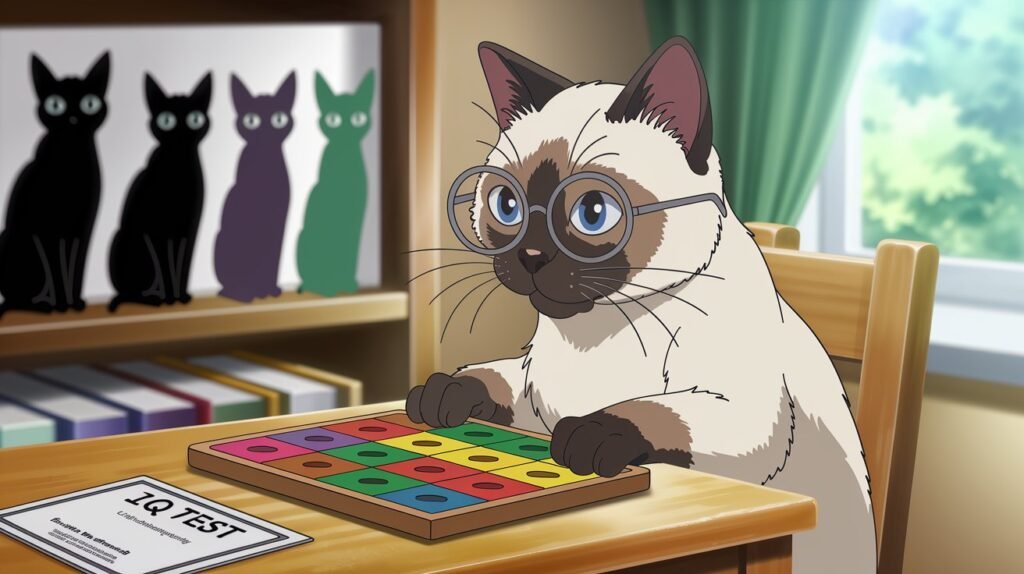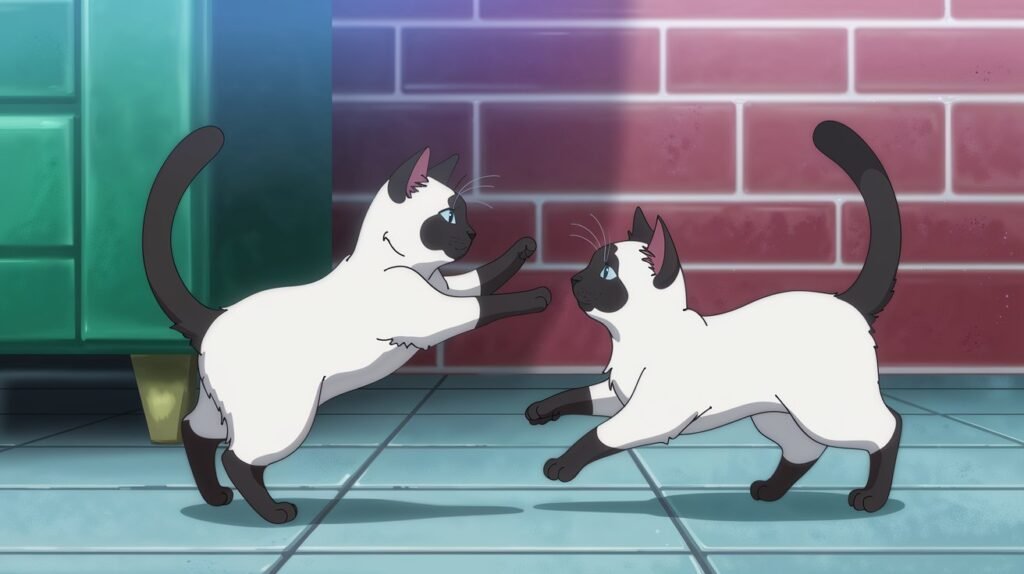We’ve all heard that one cat year equals seven human years, right? Well, I hate to break it to you, but that math is about as accurate as your cat’s promise not to wake you up at 4 AM. The reality is much more nuanced—and fascinating!
Understanding your feline friend’s true “human age” can help you provide the best care throughout their life stages. So let’s decode this age-old mystery with some scientific accuracy (and a healthy dose of humor).
The Real Math Behind Your Cat’s Age
Cats mature much faster than humans in their early years, then the aging process slows down. Here’s the breakdown:
🐱 Kitten (3 months) = 👶 4-year-old human
Your kitten is basically a preschooler: boundless energy, insatiable curiosity, and an uncanny ability to get into everything. Those 3 AM zoomies? That’s the equivalent of a toddler who found the cookie jar and consumed every last crumb.
🐱 1-year-old cat = 👩🦱 15-year-old human
Congratulations! You’re now living with a teenager. The sudden mood swings, the dramatic stares, the inexplicable need for independence while simultaneously demanding your attention—it all makes sense now, doesn’t it?
🐱 2-year-old cat = 👨 24-year-old human
Your cat has officially reached adulthood. They’ve established their routines, developed their quirks, and have that perfect blend of independence and sociability. They’ll hang out with you, but on their terms, thank you very much.
🐱 5-year-old cat = 👩💼 36-year-old human
Middle adulthood brings more stability. Your cat is like that friend who’s settled into their career and prefers a quiet night in over wild adventures. They still have playful moments, but comfort is becoming increasingly important.
🐱 8-year-old cat = 👨💼 48-year-old human
Your cat might start showing subtle signs of aging now. They may sleep a bit more and play a bit less. They’ve mastered the art of finding the sunniest spot in the house and may need more attention to their health.
🐱 12-year-old cat = 👴 64-year-old human
Your senior kitty might show signs of cognitive changes. That confusion about which side of the door they want to be on? It’s the feline equivalent of walking into a room and forgetting why you’re there.
🐱 15-year-old cat = 👵 76-year-old human
Your cat is officially a senior citizen who deserves your respect and extra TLC. They may move more slowly, need more regular vet visits, and appreciate those heated beds even more.
🐱 18-year-old cat = 🧓 88-year-old human
If your cat has reached this impressive age, you’re doing something right! They’re the wise elder of the household now, deserving of all the gentle affection and specialized care you can provide.
Why the Traditional “7 Years” Formula Falls Short
The seven-year rule came about as a simple way to convey that pets age faster than humans, but it doesn’t account for:
- Cats reach sexual maturity as early as 6 months (imagine if human 3½-year-olds could reproduce!)
- A one-year-old cat is physically equivalent to a human in their mid-teens
- The aging process slows considerably after the first few years
- Different breeds age at different rates
Signs Your Cat Is Entering a New Life Stage
Your cat can’t tell you their age, but their body and behavior will give you clues:
Kitten to Young Adult:
- Development of permanent teeth
- Reaching full size (typically by 12 months)
- Settling into more predictable behavior patterns
Adult to Middle Age:
- Slightly less playful energy
- More established sleeping spots and routines
- Potential weight gain if diet isn’t monitored
Middle Age to Senior:
- Graying around the muzzle or paws
- Changes in sleeping patterns
- Less interest in strenuous play
- Possible stiffness after long periods of rest
Interactive: Calculate Your Cat’s Human Age
How old is your furry friend in human years? Use this simplified formula for a quick calculation:
For a cat’s first year:
- 0-1 month = 0-1 human year
- 2-3 months = 2-4 human years
- 4-6 months = 6-10 human years
- 7-12 months = 12-15 human years
For a cat’s second year:
- Add 9 human years (making a 2-year-old cat about 24 human years)
For each year after that:
- Add about 4 human years
Try this interactive calculation:
- Write down your cat’s exact age in years and months
- Use the formula above to calculate their human age
- Share a photo of your cat on social media with their “human age” revealed!
The Cat Age Challenge
Ready for some fun? Take the “Guess My Cat Age” challenge with these scenarios. Based on the behaviors described, can you guess how old these cats are in human years?
Scenario 1: This cat sleeps most of the day but has brief periods of intense play. They’ve established favorite sleeping spots but occasionally race around the house for no apparent reason. They’re independent but seek affection on their terms.
Scenario 2: This cat constantly explores everything, climbs curtains, pounces on invisible prey, and seems to have endless energy. They’re learning litter box habits but sometimes have accidents.
Scenario 3: This cat moves more slowly and deliberately. They spend most of their day sleeping in sunny spots and seek out warm places. They’re less interested in toys but still enjoy gentle affection.
(Answers: Scenario 1 – approximately 5 years old (36 human years); Scenario 2 – approximately 4 months old (6-8 human years); Scenario 3 – approximately 14 years old (72 human years))
Caring For Your Cat Through Every Age
Understanding your cat’s true “human age” helps you provide life-stage appropriate care:
Kittens (0-1 year):
- Multiple small meals daily
- Kitten-formulated food high in protein
- Lots of play to develop coordination and hunting skills
- Safe spaces to explore and climb
Young Adults (1-6 years):
- Regular play sessions to maintain healthy weight
- Mental stimulation through toys and interaction
- Established feeding routine
- Regular vet check-ups
Middle Age (7-10 years):
- Monitor weight more closely
- Consider transitioning to adult maintenance food
- Watch for early signs of age-related issues
- Continue play but adjust intensity
Seniors (11+ years):
- More frequent vet visits
- Possibly special senior-formulated food
- Easier access to favorite spots (ramps, steps)
- Extra comfort measures (heated beds, softer surfaces)
- Pain management if needed
The Joy of Multi-Generational Cat Households
If you’re fortunate enough to have cats of different ages, you’re witnessing a fascinating family dynamic. Your older cat might take on a mentoring role with your kitten, or they might establish clear boundaries about personal space. Either way, watching the interaction between a cat “teenager” and a cat “grandparent” offers endless entertainment and learning opportunities for both them and you.
Remember: Age Is Just a Number
Just like humans, cats age individually. Genetics, environment, diet, medical care, and lifestyle all play significant roles in how your cat experiences aging. That independent, slightly grumpy 12-year-old might actually have the energy and playfulness of a much younger cat if they’ve had excellent care throughout their life.
The most important thing isn’t the number—it’s the quality of life you provide at every stage. From kitten to senior, each phase of your cat’s life brings unique joys and challenges. Understanding where they are on their journey helps you meet their changing needs with the same unconditional love they give you (well, mostly unconditional—let’s be honest, cats have standards).
So the next time your senior cat wakes you up at dawn demanding breakfast, remember: they’re just a 76-year-old who knows exactly what they want and when they want it. And honestly, wouldn’t we all like to be that confident in our golden years?







